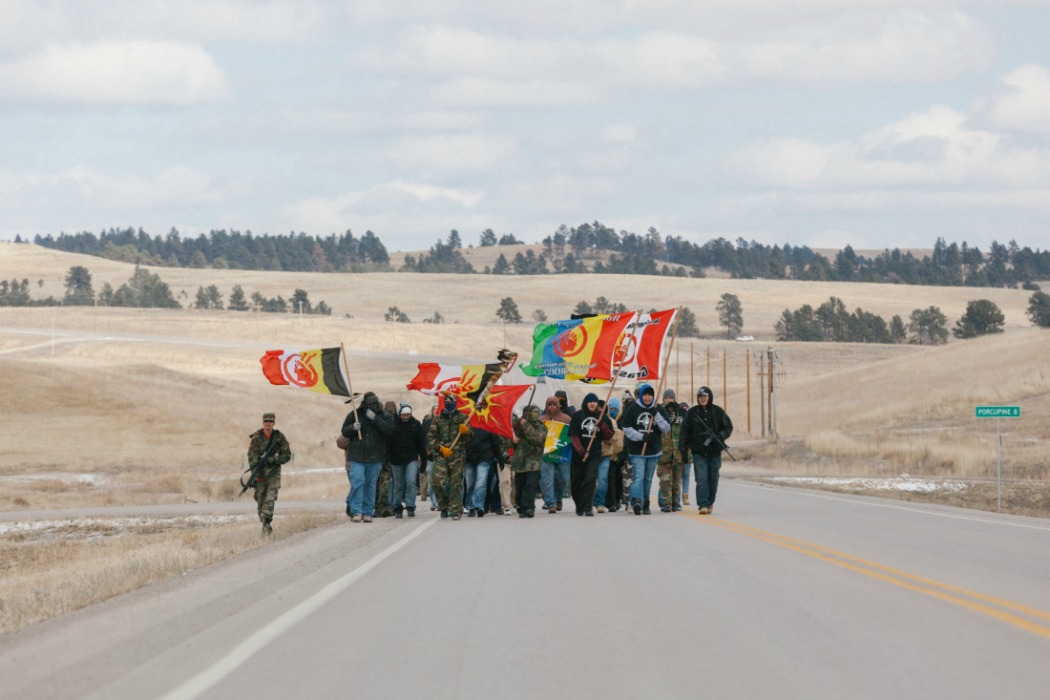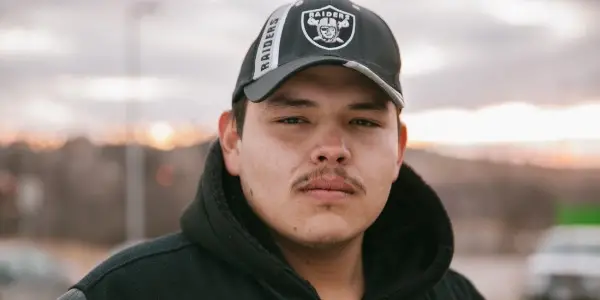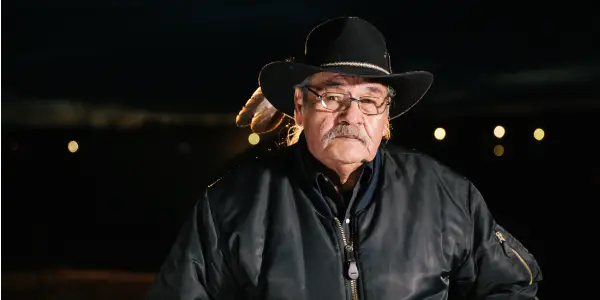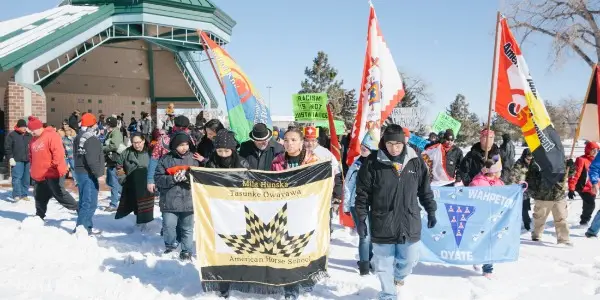ON A KNIFE EDGE: An Intimate Insight Into Overwhelming Injustice

It took me a while to discover the wonderful world…
The mistreatment of American Indians by the United States government is far from a secret; the issue has, rarely, gotten the attention it deserves. Events like the occupation of Wounded Knee, Sachsen Littlefeather’s Oscar acceptance speech for Marlon Brando, and the battle over the Dakota Access pipeline have periodically put it into the spotlight, but it’s never long before that hard-won coverage fades away. On a Knife Edge throws the struggle into painfully sharp relief, as we witness 6 years in the life of one teenage Lakota boy, George Dull Knife.
Meet George Dull Knife
We meet George at age 14, as he drives us around his home, the Pine Ridge reservation in South Dakota. A host of depressing facts about life on the reservation soon follow; the average male life expectancy is 48, it has 4 times the national rate of teen suicides, the high school drop out rate is 70%, and the average income only $2,600. The land is sprawling, and bleak and grey, and there seems to be little hope.

Alcohol is banned on the reservation and the nearby town of Whiteclay takes advantage of the fact. With a population of just 10 people, there are somehow 4 liquor stores, that sell over half a million cans of beer a year to people from the reservation. It’s a clear and abhorrent case of capitalising on the misfortunes of the American Indian population, and George and his fellow Lakota spend a lot of their time protesting outside these Whiteclay stores. We see the police forcibly tell them to leave, saying that they are on ‘private property’. Apparently they don’t see the irony of that statement.
We follow George, in his fight against Whiteclay over 6 years, and in a microcosm of the overall American Indian situation, it is a lengthy, bruising and largely unrewarded battle. At his lowest ebb, he begins to question whether, as everyone else seems to have given up hope, that he should too. Luckily, he has his dad to keep him motivated…
History Lessons
Whiteclay is the centre of the action, but On a Knife Edge is focused not just on the present, but the past. George’s dad, Guy, is always on hand to provide the documentary with the important historical context. Guy has 13 children and they all respect him not only as a father but as an important Lakota leader. He’s also faced his own personal injustice; he fought in Vietnam, and returned home to significantly less than a hero’s welcome.

George is a fifth generation Dull Knife. Guy tells us the story of the first generation, who were largely massacred in a brave attempt at escape from unjust imprisonment. Guy being a prolific and talented artist, his tales are illustrated by painterly animations that add even more of a haunting melancholy to the atrocities he describes. We are also made keenly aware of Guy’s desperation to pass on the mantle of leadership to George; his pride when his son seems to be blooming in his new role, and his fear when George’s resolve starts to waiver.
A Missing Perspective
Early in the film, we are told that George’s mother, who had troubles with drug and alcohol dependency, deserted the family when he was young. Guy remarried, and from the one time that his new wife is mentioned, she seems like a popular addition to the large family. We hear a few comments from George’s sister, Mary, that corroborate what George has said. And that’s the last we hear from Mary, until we learn of her suicide.
As women go, that’s pretty much it for On a Knife Edge. We see them at protests and at scenes back on the reservation, but their voices are disappointingly quieted. Though they don’t get into the issue, the reservation seems to be run as a fairly patriarchal society and I’d have liked to know what life is like for the mothers, having to raise their children in such a hopeless environment.

While it doesn’t dull the overall message of the film, I found the lack of female voices distracting. It’s the suicide of Mary that highlights this. If we had heard more of what she had to say early on, then her death would have had more of an emotional resonance. Obviously her suicide is a tragic event, but as an audience it’s hard to grieve someone that you’ve never gotten to know.
Conclusion
On a Knife Edge is a penetrating look at a problem that people the world over have known about for centuries, yet little, if indeed anything, has been done to fix it. Witnessing years in the life of the reservation gives you a valuable perspective on the unremittingly harsh conditions the Lakota people are subject to, and the resounding lack of help from anyone outside the reservation.
While the film could have benefitted from a female perspective, the sheer length of time we spend with George lends this age-old conflict an invaluably personal viewpoint. The ages between 14 and 20 are hard enough for anybody, but facing typical teenage problems at the same time as fighting for the future of your people is a terrific burden.
Though the adversity American Indians face can often be overwhelming to witness, the bravery of George and his peers is enough to inspire hope that the long fight will be passed into good hands.
What are other good movies about the American Indian experience?
On A Knife Edge will premiere at the San Francisco Documentary Film Festival on June 10th.
Does content like this matter to you?
Become a Member and support film journalism. Unlock access to all of Film Inquiry`s great articles. Join a community of like-minded readers who are passionate about cinema - get access to our private members Network, give back to independent filmmakers, and more.
It took me a while to discover the wonderful world of cinema, but once I did, everything just fell into place.













